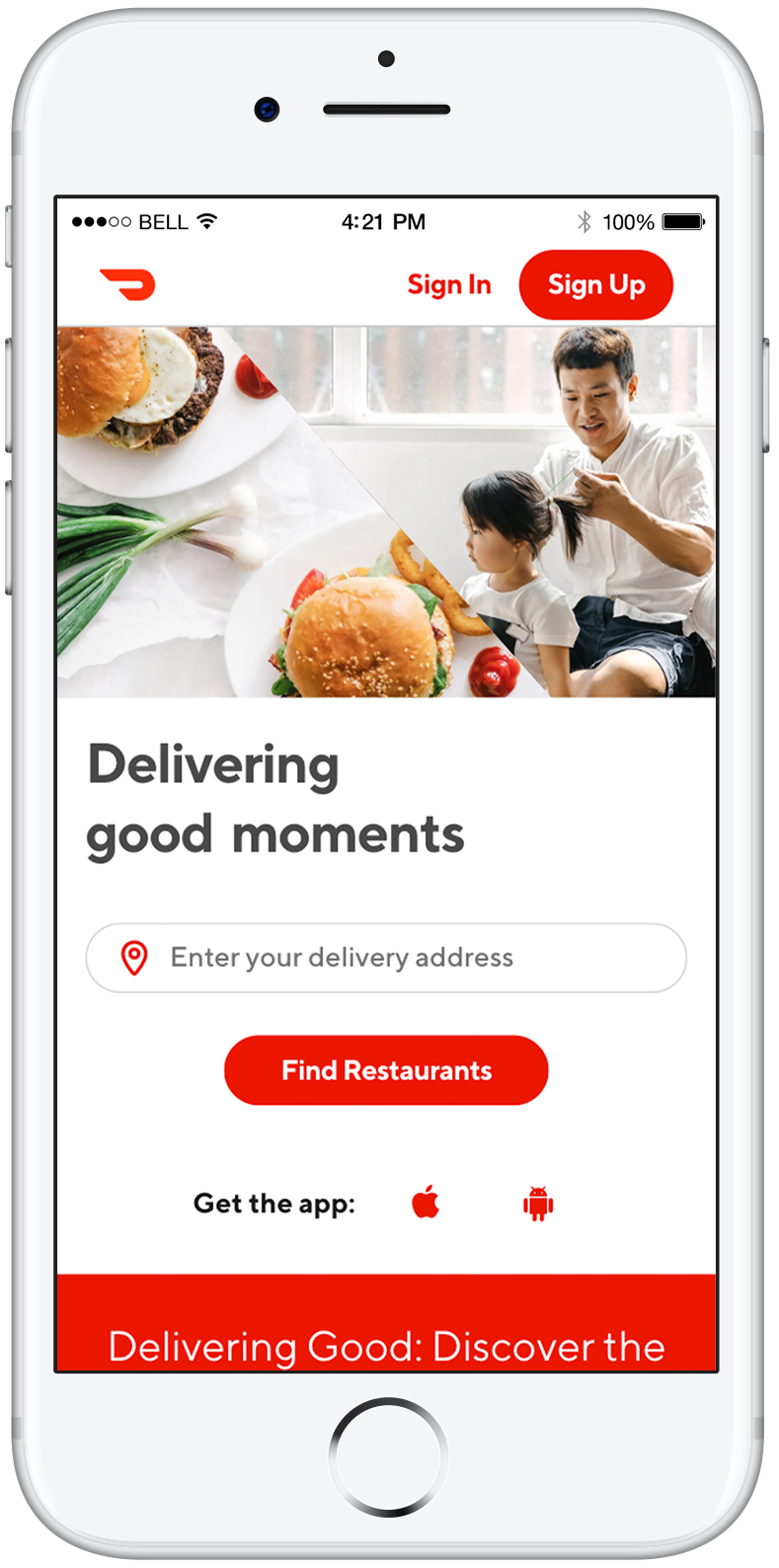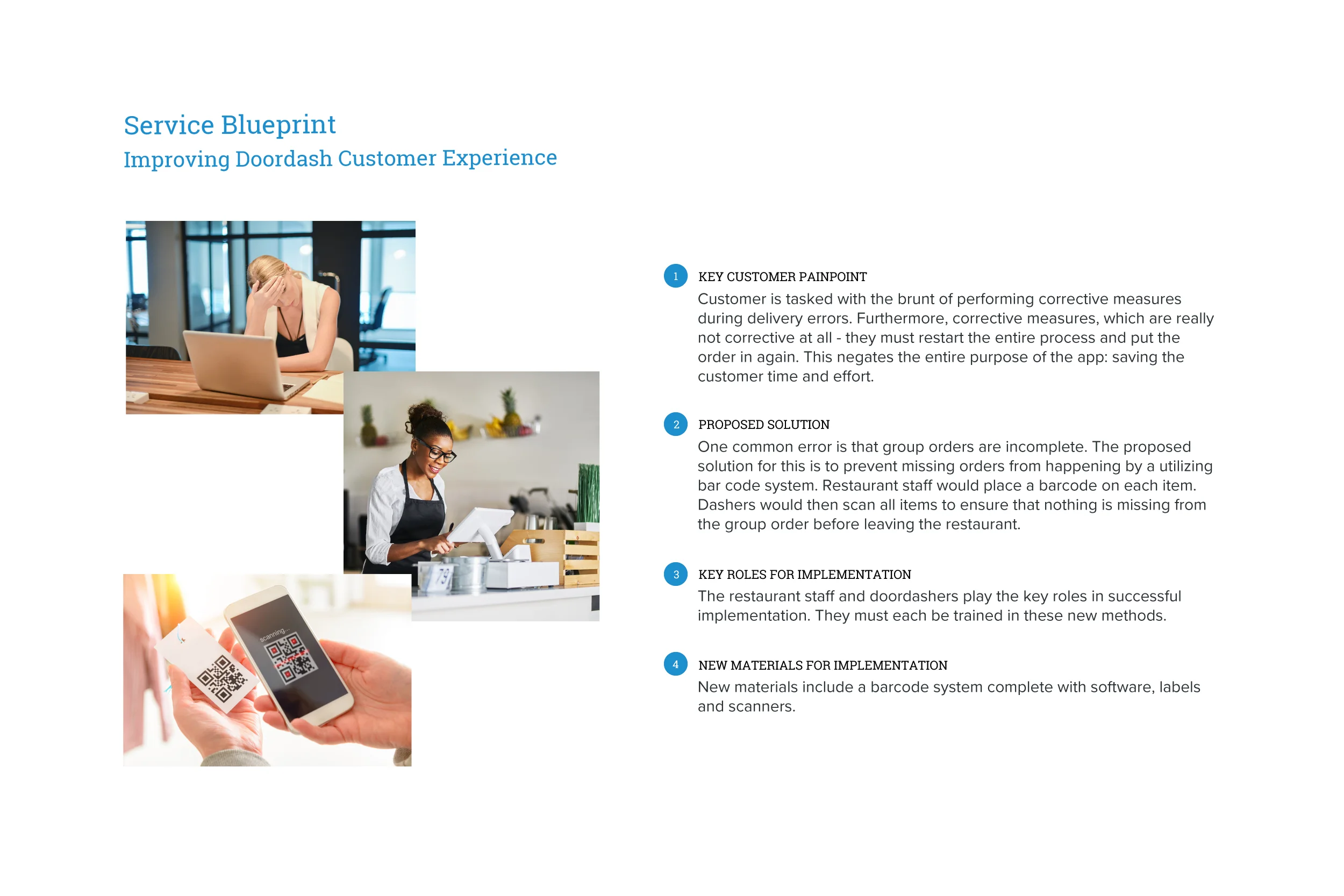IDEO U
I completed the Human-Centered Service Design Course at IDEO – a renowned,
award-winning design institution. This course heightened my skill in tying together human, digital, and physical interactions to create elevated customer experiences. For my final project, I identified critical moments within DoorDash’s customer flow and restructured the experience to ensure the integrity of the service.
human-centered service design | user experience | prototype | customer journey map
1
INTRODUCTION TO DOORDASH
Doordash is a food delivery service app.
“With your favorite restaurants at your fingertips, DoorDash satisfies your cravings and connects you with possibilities — more time and energy for yourself and loved ones.”
2
IDENTIFY THE CUSTOMER
Envisioning the ideal customer of the service, who they are and what they value.
Kaitlyn, a 25 year old office manager, resides in San Jose, California. She has many tasks and little time. One task is to order lunch for the entire office. She is well-accustomed to technology and digital experiences and uses Doordash frequently to quickly place orders with a couple clicks of a button. This saves her both time and effort.
3
BUILD CUSTOMER JOURNEY MAP
I mapped out each moment throughout the customer’s journey. Next, I chose key moments and indicated how the customer might feel during each of them. Identifying these moments - especially high and low points - helped gain insight into what moments mattered most to the customer and how we might improve or capitalize on those moments to improve the customer experience.
KEY HIGH MOMENT
Placing the group order quickly efficiently through the Doordash app.
KEY LOW MOMENT
Personally re-ordering food items that are missing from group orders.
4
CHOOSE A MOMENT TO IMPROVE UPON
I chose to improve upon the key low moment in the customer journey: having to re-order missing food items.
The Doordash service aspect completely falls apart during food delivery errors; Doordash cancels the item that is missing and the customer is tasked with performing all corrective measures, which are really not corrective at all, as the customer essentially must restart the entire process and put their order in again.
Doordash prides itself on “satisfying your cravings while helping you create more time for yourself”. Yet, tasking the customer with rectifying errors negates the entire purpose of the app: saving the customer time and effort.
5
FIND A SOLUTION
Where is the greatest opportunity to improve your service? Which part of the overall journey is most critical to the operational success of your service experience? Where do you have the highest potential to create more unique value?
GENERATE AN IDEA FOR A POSSIBLE SOLUTION
First, I drafted the key question that I was trying to solve:
How might we rectify food errors in a less painful and more efficient way?
Next, I brainstormed different solutions and settled on one: Prevent missing orders from even happening by a utilizing bar code system (before leaving the restaurant, dashers would scan all items to ensure that nothing is missing from the group order).
ROLE-PLAY THE SOLUTION
I identified the different roles that would be involved in the solution:
1. Restaurant
2. Door dasher
3. Office manager (Kaitlyn)
Next, I identified what each role’s function, character and key interactions would be. Other points I kept in mind were what objects they may use and environments they would be involved in.
PROTOTYPE THE SOLUTION
I Illustrated each key moments during the barcode scanning process that would be implemented to help ensure that there are no missing items from Doordash orders. The key moments were:
Restaurant receives Doordash order, complete with details & barcodes for each item
Restaurant puts barcodes on each food item & matches barcode to order
Doordasher scans barcode on each food item to ensure order is complete
Doordasher delivers order to customer
Office manager distributes food orders to group
6
CREATE A SERVICE BLUEPRINT
The final step was to take my findings and outline them clearly. This blueprint serves as an artifact to help key stakeholders understand major moments in the customer journey, why they’re important, how they can be improved upon and what’s needed to pull them off.









